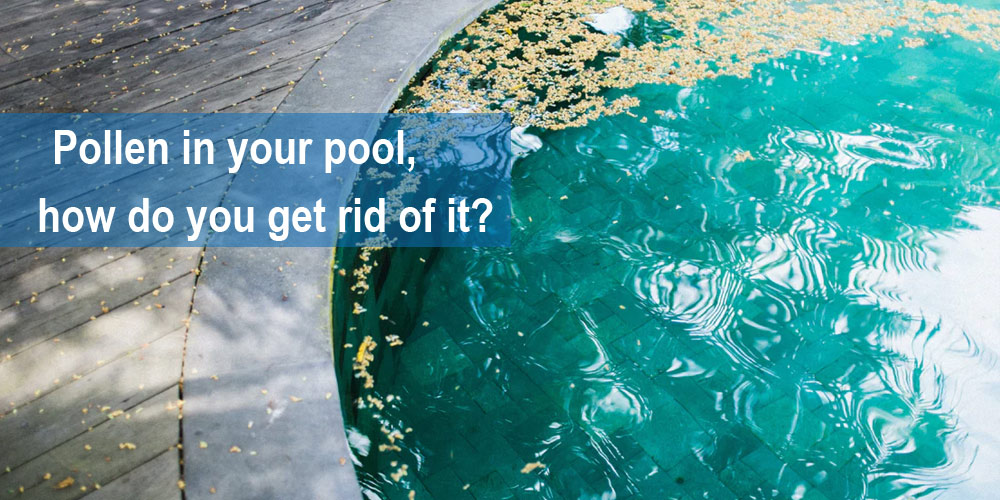Pollen is a tiny, lightweight particle that can be a headache for pool owners. This is especially true in the spring and summer when flowers are in bloom. Pollen grains are carried into your pool by wind, insects or rainwater.
Unlike other debris, such as leaves or dirt, pollen is much smaller, making it more challenging to remove using standard pool maintenance techniques. Pollen often appears as a thin layer of yellow or green dust floating on the surface of the water or accumulating in the nooks and crannies of your pool.
Negative Effects of Pollen on Your Pool
Water Quality: Pollen may promote the growth of algae and bacteria, causing cloudy water and unpleasant odors.
Allergic Reactions: Swimming in a pollen-contaminated pool can trigger allergies in sensitive people, causing symptoms such as itchy eyes, sneezing and rashes.
Clogged Filters: Pollen can clog your pool filter, reducing its efficiency and increasing the need for more frequent cleanings.
How to Identify Pollen in Your Pool
If you’ve never seen pollen in your pool, it may look a lot like mustard algae or yellow algae. So before you begin the cleaning process, you need to make sure you are actually dealing with pollen and not algae or dust. The difference lies in where the pollen is collecting. Here are some of the telltale signs of pollen:
- Forms a powdery film on the surface of the water.
- Appears yellow or green.
- Does not adhere to the pool walls or floor unless left undisturbed for a long time.
- And you notice that some of this algae has been absorbed by your pool’s filtration system, there is a good chance you have a pollen problem.
How to Remove Pollen from Your Pool
Removing pollen requires a combination of manual cleaning, filter conditioning, and sometimes chemical treatments. Follow these steps to effectively clean your pool:
Skimming:
Use a pool skimmer to remove pollen and debris from the surface of the water each day before swimming. This simple task can significantly reduce the amount of pollen in your pool. During high pollen seasons, you may need to repeat this process several times a day.
Backwash your filter:
Backwash your filter regularly to remove pollen trapped in the filter media. This will help improve water clarity and prevent the spread of contaminants.
Shock your pool:
Shocking your pool with chlorine or another oxidizing agent will help kill bacteria and oxidize organic matter, including pollen. Follow the manufacturer’s instructions to select the appropriate shock level and treatment time.( usually recommended SDIC granules or calcium hypochlorite )
Use a pool clarifier:
Pool clarifiers help to clump fine particles, such as pollen, together, making them easier to filter out. (Aluminum sulfate, PAC, PD, PA, etc.)
How to prevent pollen from entering your pool
Trim nearby vegetation
If there are trees, shrubs, or flowering plants around your pool, consider pruning or relocating them to minimize pollen exposure. Choose low-pollen landscaping options, such as non-flowering shrubs or evergreens to reduce the amount of pollen produced.
Install a pool cover:
Pool covers can prevent pollen and other debris from entering your pool when it is not in use.
Install a pool fence:
If you have a serious pollen problem, consider installing a pool fence to create a barrier between your pool and the outside environment.
Pollen in your pool can be an ongoing problem, but with proper maintenance and preventive measures, it can be controlled. The above are solutions and preventive measures for pollen problems summarized by pool chemical suppliers, I hope it can help you.
Post time: Jan-22-2025


